

Max Davies
2025 Toyota Corolla SX review
6 Days Ago
Mitsubishi’s ‘other’ small SUV has struggled for the buyer acceptance enjoyed by the ASX. Curt tries the all-paw Exceed flagship to see if it deserves more attention.
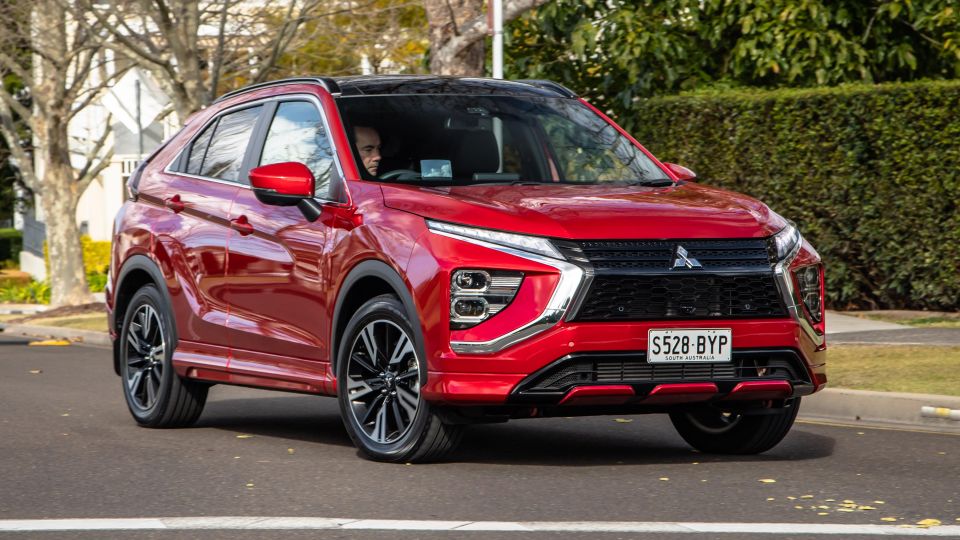
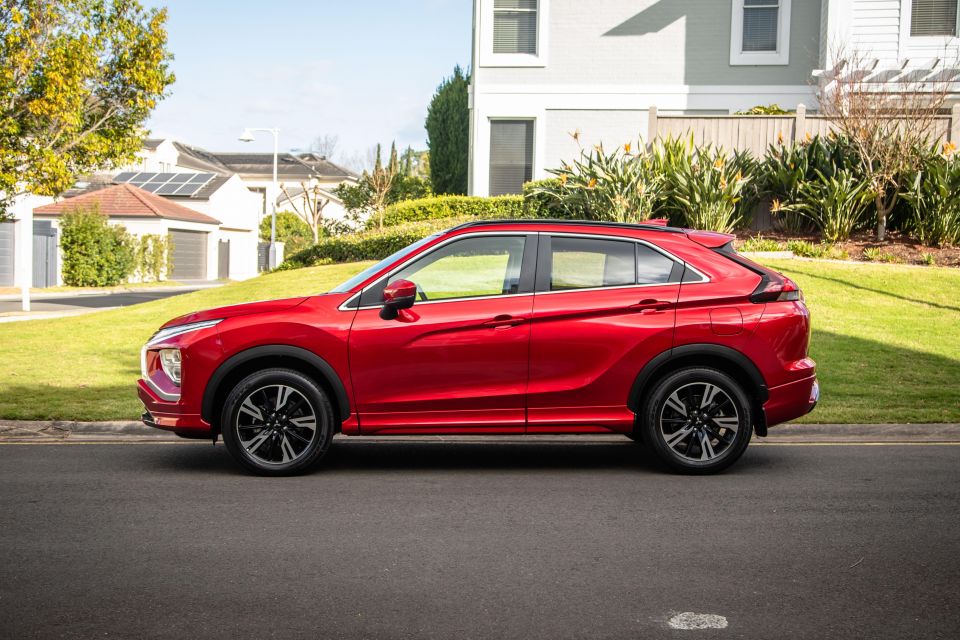

Journalist
New from
$29,990
excl. on-roads

Journalist
New from
$29,990
excl. on-roads


Journalist
New from
$29,990
excl. on-roads

Journalist
New from
$29,990
excl. on-roads
Quickly see how this car stacks up against its competition. Select any benchmark to see more details.
Where expert car reviews meet expert car buying – CarExpert gives you trusted advice, personalised service and real savings on your next new car.
Small-plus? Small-and-a-half? Semi-medium?
Whatever the you want to call it, Mitsubishi’s Eclipse Cross lobbed into a not-too-small, not-quite-medium space back in 2018, dovetailed between the popular ASX and the soon-to-be-replaced Outlander.
A fresh look, techier aspirations; this was Mitsubishi looking forward and upmarket, and it was priced accordingly. It hasn’t nearly been accepted with buyers like its more affordable smaller sibling, despite its newer spin.

At the kick-off of 2021, the Eclipse Cross grew by 140mm. Suddenly this revised range, with bolstered cabin and boot space, was more confidently medium in size and, perception being what it is, more worthy of its price tag.
On test is the fanciest of the breed, the range-topping 2021 Mitsubishi Eclipse Cross Exceed AWD, with bells and whistles ringing loudly for what its maker presents as a more evolved Mitsubishi than the two SUV model lines flanking it.
Does it nail the brief, scaling its upmarket push to the funkier plateau where it hopes to park itself? Let’s find out.
The flagship of the Eclipse Cross range arrives at $40,790 before on-road costs. At the time of writing, the Exceed AWD was advertised at $43,990 drive-away in any one of seven available paint finishes, including our tester’s Red Diamond metallic, at no extra cost.
The Exceed AWD is $5700 more than the cheapest all-paw variant, the LS ($35,090). Want the same flagship trim in front-drive form? You’ll save $2500 with the Exceed 2WD ($38,290).
The whole range kicks off at $30,290 before on-roads for the basic ES, meaning the range spread of the Eclipse Cross is ostensibly around $6000-$7000 pricier than the big-selling ASX.
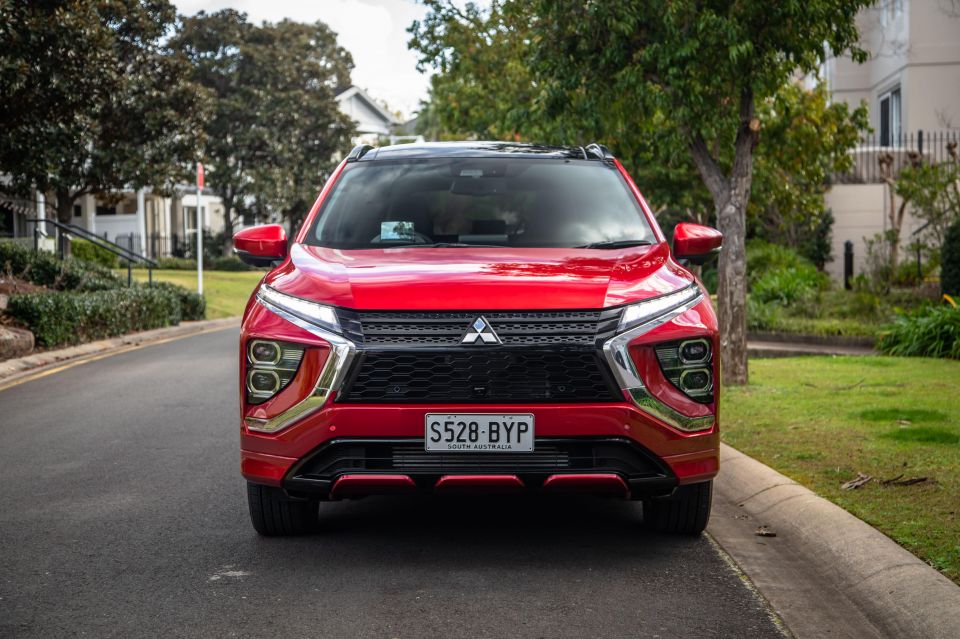
No matter, because Eclipse Cross realistically competes against mid-sized SUVs. At the Exceed AWD’s lofty ask, you’d most likely cross-shop against:
Prices exclude on-road costs.
Of course, there’s also Mitsubishi’s own Outlander Exceed AWD petrol ($43,990), though it makes do with an atmo 2.4-litre petrol.
Further, there’s a handful of segment-straddling ‘small SUVs’ like the Kia Seltos GT-Line ($44,290 drive-away) and the runout Nissan Qashqai Ti ($39,090), while the Hyundai Kona N Line Premium ($42,400) is a sportier turbocharged AWD alternative.
As a turbocharged all-paw range-topper, the Exceed appears decent value against medium-sized competition given a good many aren’t flagship variants and some don’t feature force-induced engines.
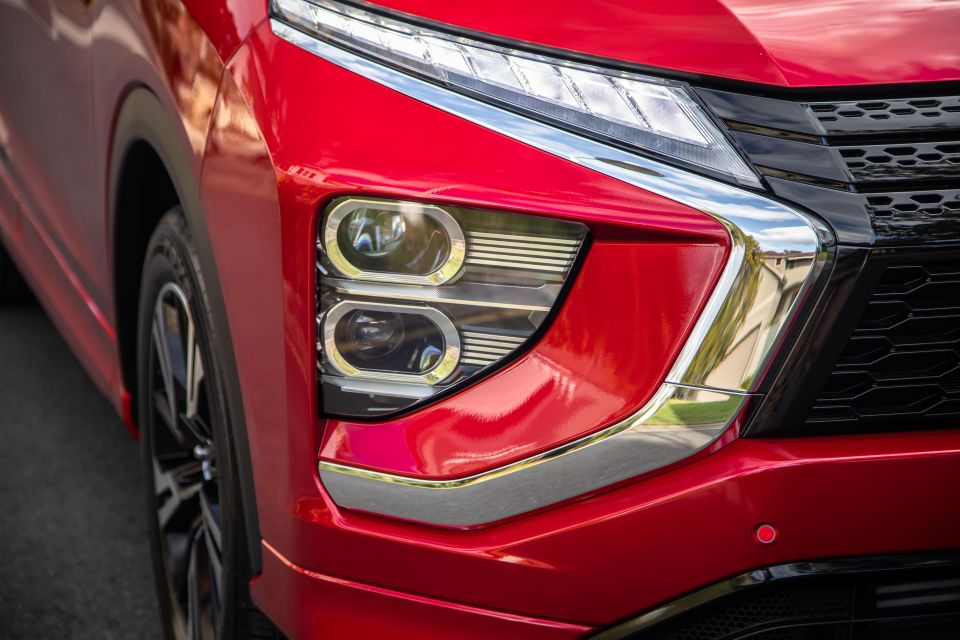
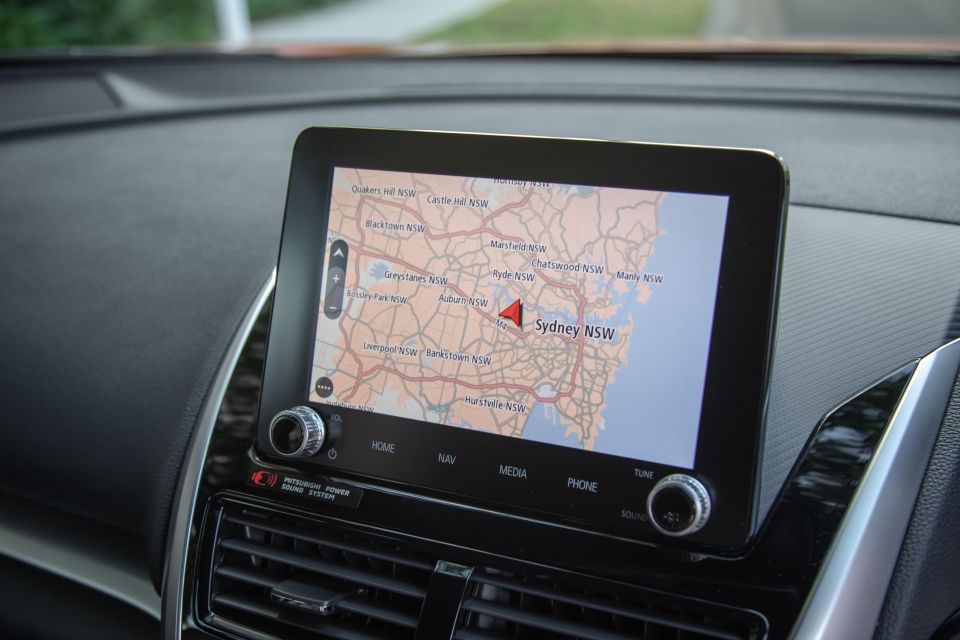
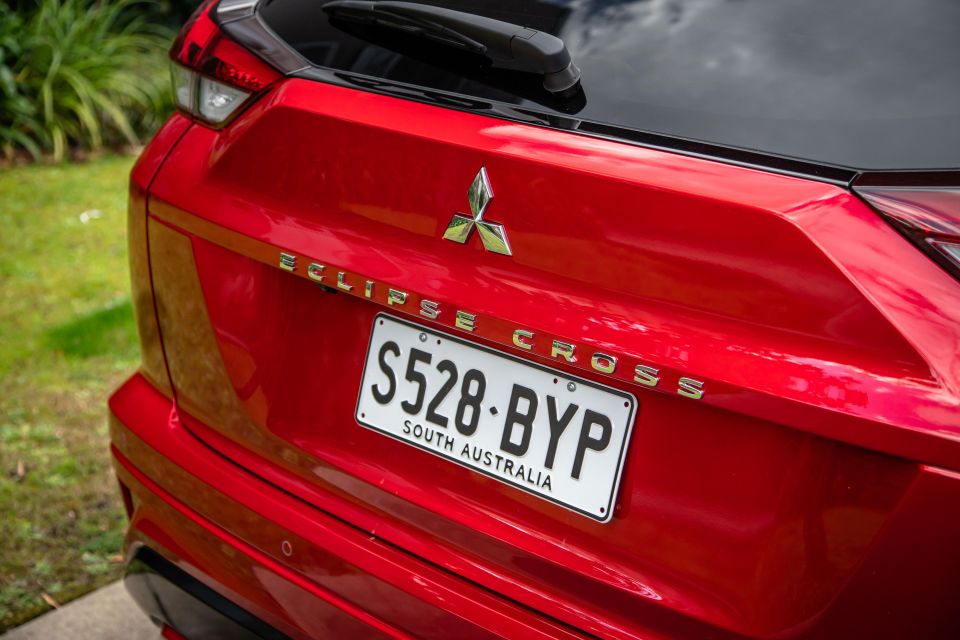
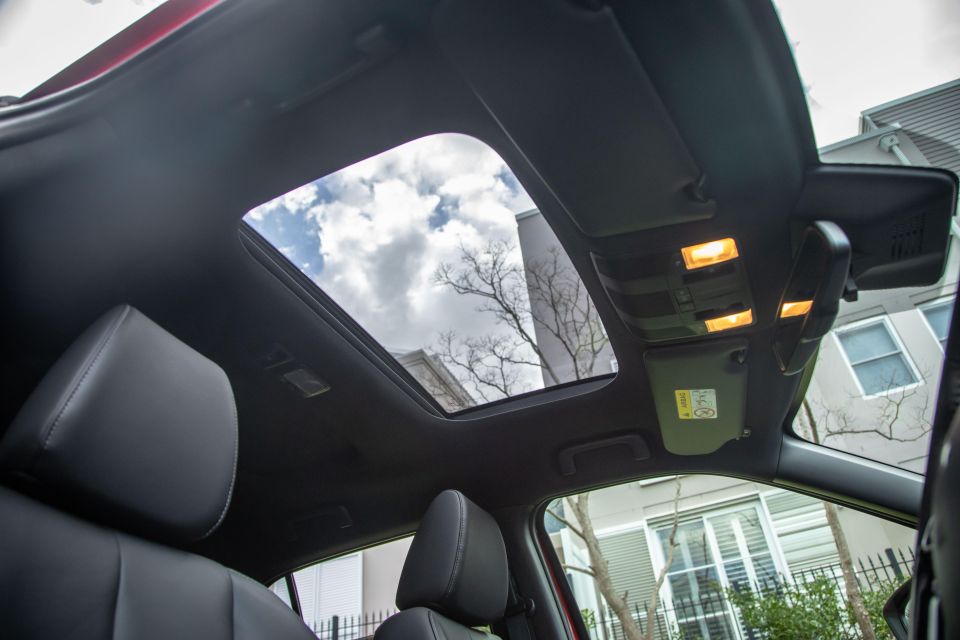
Buy your new car without the stress. It's fast, simple and completely free.

Great service from Travis and team, second time I have used this business would not hesitate to recommend them to anyone
Craig C.
Purchased a Ford Ranger in Sunshine Coast, QLD
CarExpert helped Craig save $7,224 on his Ford Ranger, now let us save you on your next new car.
Get your BEST priceIt’s fair to expect the Exceed lives up to its name in spec and equipment. And it’d want some fanciness given even the basic ES gets 18-inch alloys, 8.0-inch infotainment with Apple CarPlay and Android Auto, DAB+ radio and climate control common with our flagship tester.
By the range’s middle ranks, at Aspire, you can expect adaptive cruise control, microsuede and synthetic leather trim, heated and power-folding mirrors, auto lights and wipers, two-zone climate, front and rear sensors, eight-speaker audio, 360-degree camera system and more fulsome active safety assistance.
What separates the Exceed from its kin are LED headlights, partial genuine leather trim with two-row seat heating, a retractable head-up display, a dual-sunroof and a heated steering wheel for your investment.

In fact, it’s such a gradual walk-up in grades with relatively slim differences in pricing that it’s easy to tune spec to your budget in the Eclipse Cross range, though there’s less choice in AWD than if you opt for a front-driven option.
Indeed, there’s a strong case that the Aspire is the sweet spot, as we surmised in our review of that version, though the caveat is that you lose out on an AWD option, LED lighting and once you climb down the range nice paintwork starts to become a pricey option (between $740 and $940).
On paper, then, the Exceed AWD mostly justifies its ask given its level of kit.
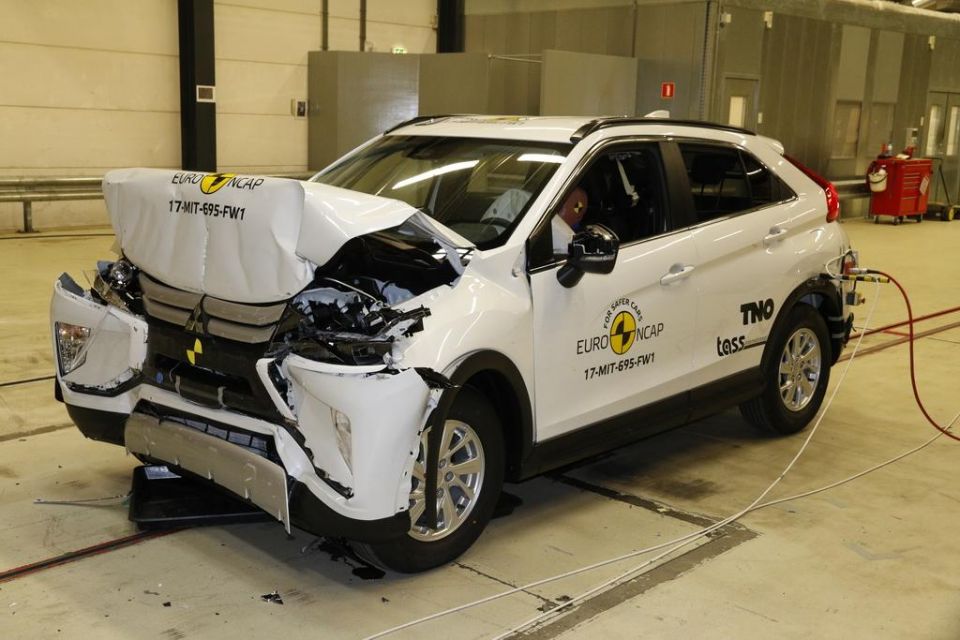
The Eclipse Cross range scored a full five stars with ANCAP, off Euro NCAP assessment conducted back in 2017.
It scored 97 per cent for adult and 78 per cent for child occupant protection, bolstered by its seven-airbag fit-out and full marks for AEB criteria. Pedestrian protection saw 80 per cent while safety assist, with its absence of lane support, scored a modest 58 per cent.
The more you spend the more safety kit is added. Everything gets AEB and forward collision warning, but you need to step up to ES for lane departure warning and auto high-beam then two rungs up to Aspire to broaden assistance to rear cross traffic alert, lane change assist and blind-spot monitoring.
The Exceed tops the lot by adding misacceleration mitigation, that’ll stop the vehicle in proximity of an object independent of throttle application, plus adding the aforementioned LED low- and high-beam headlight hardware.
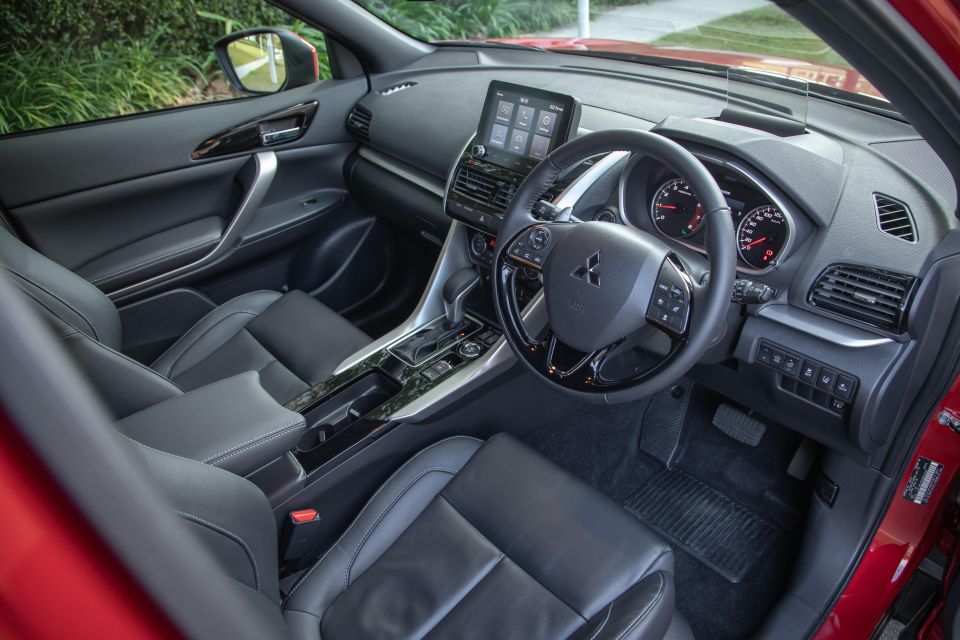
The Eclipse Cross cabin is a bit funky, not so much in styling flamboyance or in unorthodoxy. In fact, it’s conventional in this regard.
No, it’s the general design and ergonomics that are a bit strange, the front seats propped up high even at their lowest setting, while the steering wheel and driver’s cluster seemingly lumped into your lap.
You quickly acclimatise to it. You just sit so high, the pedals surely a stretch for shorter occupants, though it does afford exceptional forward vision.
Rear viewing, too, is now a bit better because the old split glass hatch, which planted a horizontal frame in your line of sight, has been replaced by a more a sensible and conventional design.

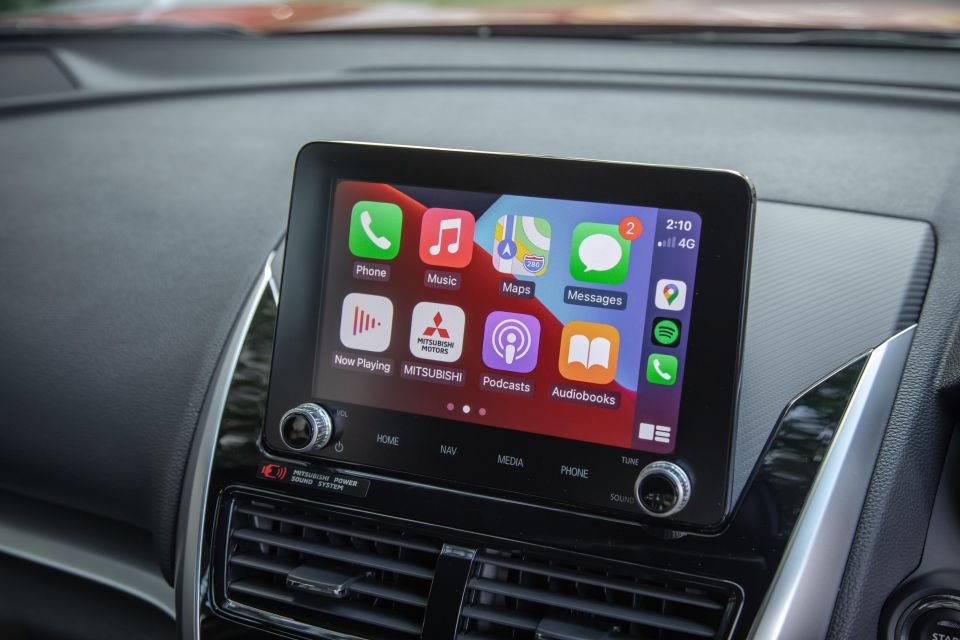

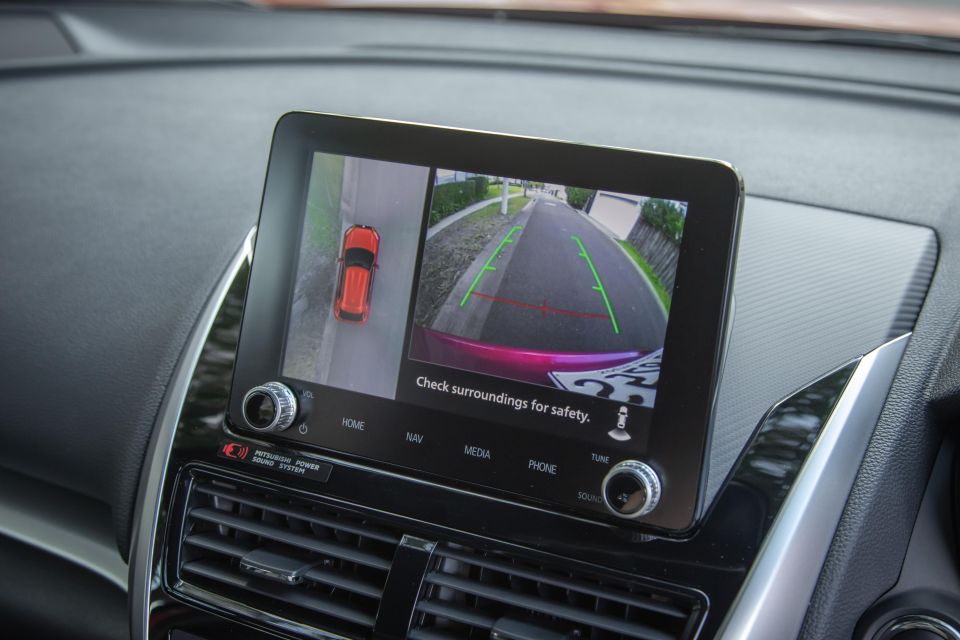
There are a few more head-scratchers. The head-up display seems angled at your chest, and the infotainment screen looks angled a little too much towards the ceiling.
Forward above your head is the switch for the front-half glass roof, but the switch for the rear-half scrim is way behind your head – designed for rear passengers (good) but awkward to access from up front (bad). Then there’s the phone cubby, clearly sized for phones prior to the arrival of Apple’s large current crop that don’t fit, even without a cable connected.
Quirks? There are plenty of them.
Presentation is decent if far from rave-worthy, the soft-touch dash to door inserts a little bland, the plastics used below the waist line a little too shiny and cheap.
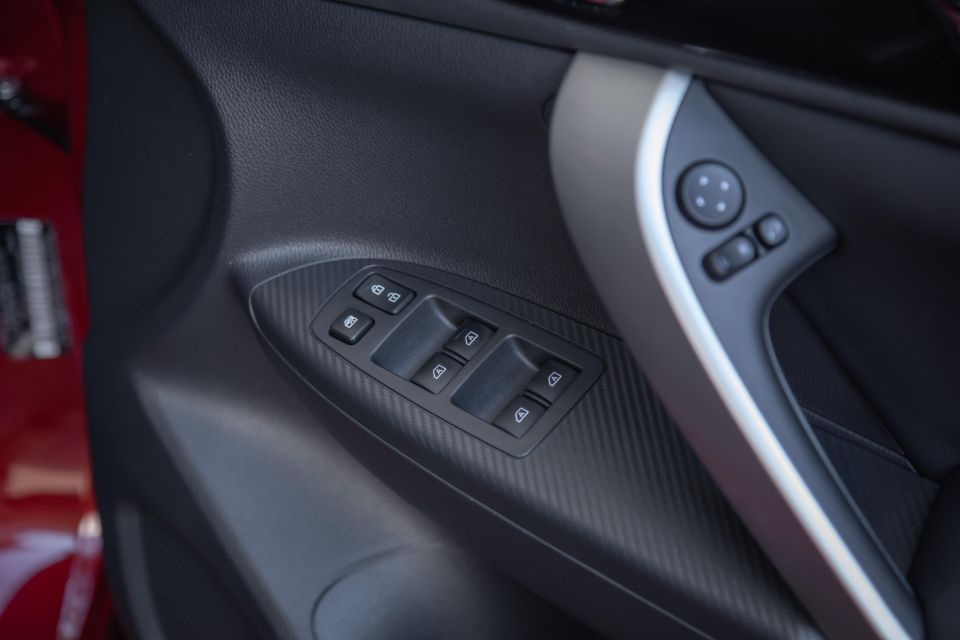



Higher grade Eclipse Crosses get a nicer grade material in areas, though there’s little premium about what’s used and the blackout theme fails to bring a sense of either richness or lightness that might otherwise bring a bit of joy to the ambience.
The seat trim is reasonably supple, though not of much of it feels convincingly genuine as leather.
The basic climate control display, rudimentary switchgear, that stuck-on audio system label, the rather pointless column-mounted paddles… we griped about some of this stuff in the Aspire and not much extra effort has been invested into lifting the Exceed to help make it feel like a higher-grade flagship.
It’s a similar story with the instrumentation and infotainment, both of which are acceptable but haven’t benefitted from much love, nor do they produce much sense of occasion.
So much of the cabin looks and feels a bit passé, and it’s not the sort of effect you want from what’s ostensibly a figurehead vehicle tasked with representing brand design and styling at its leading edge.
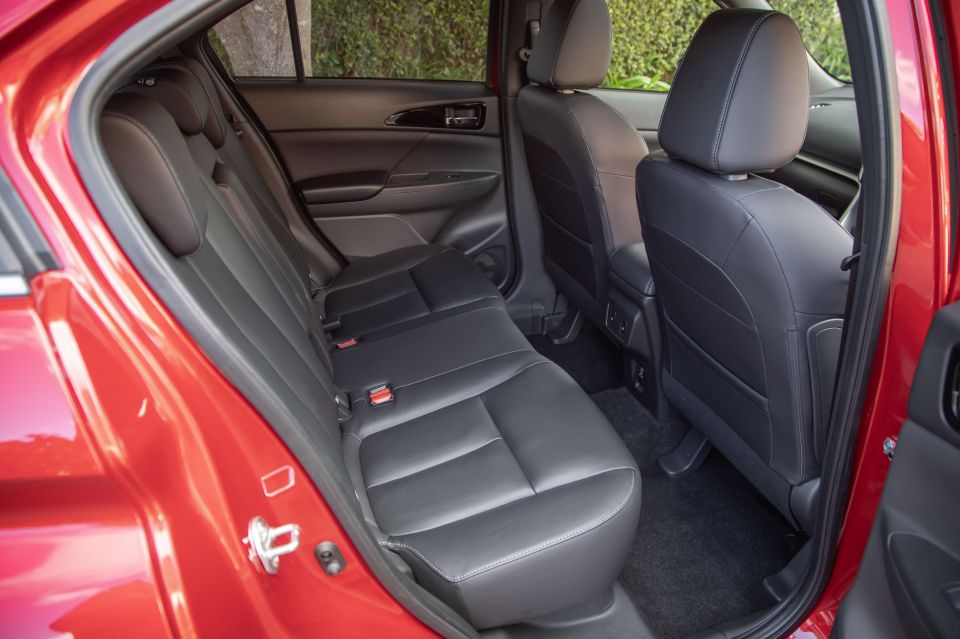
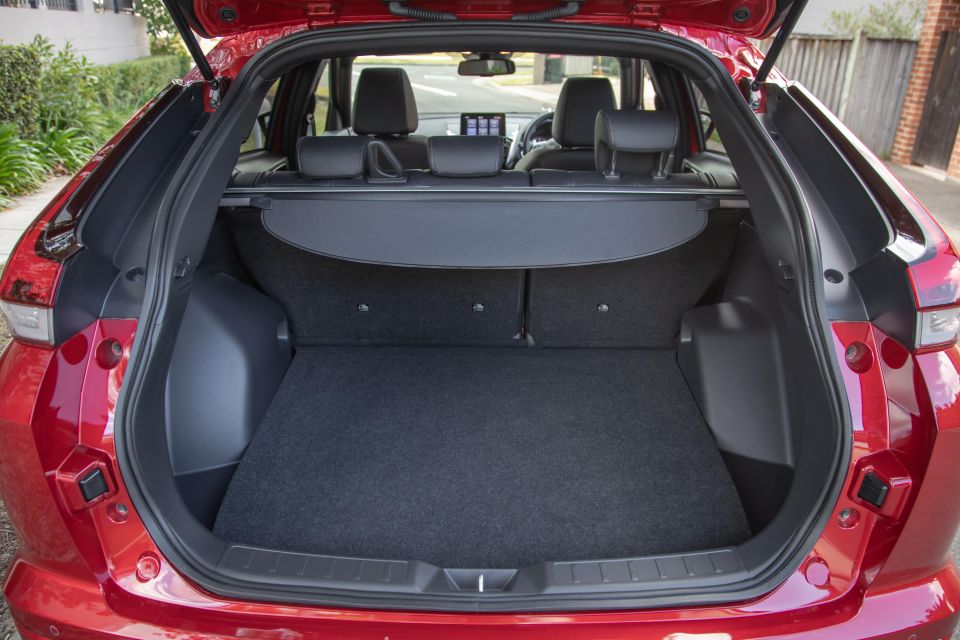
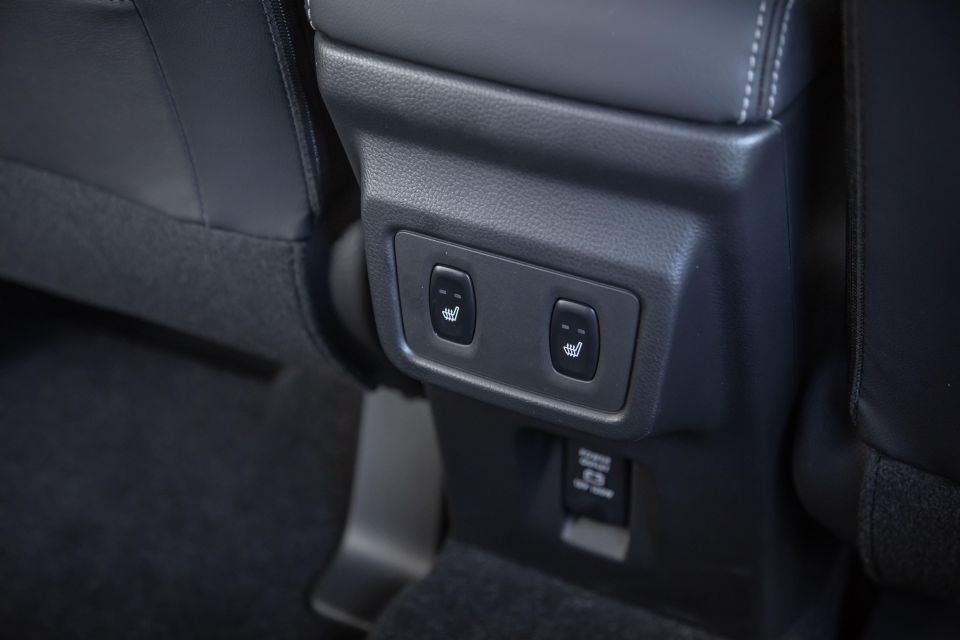
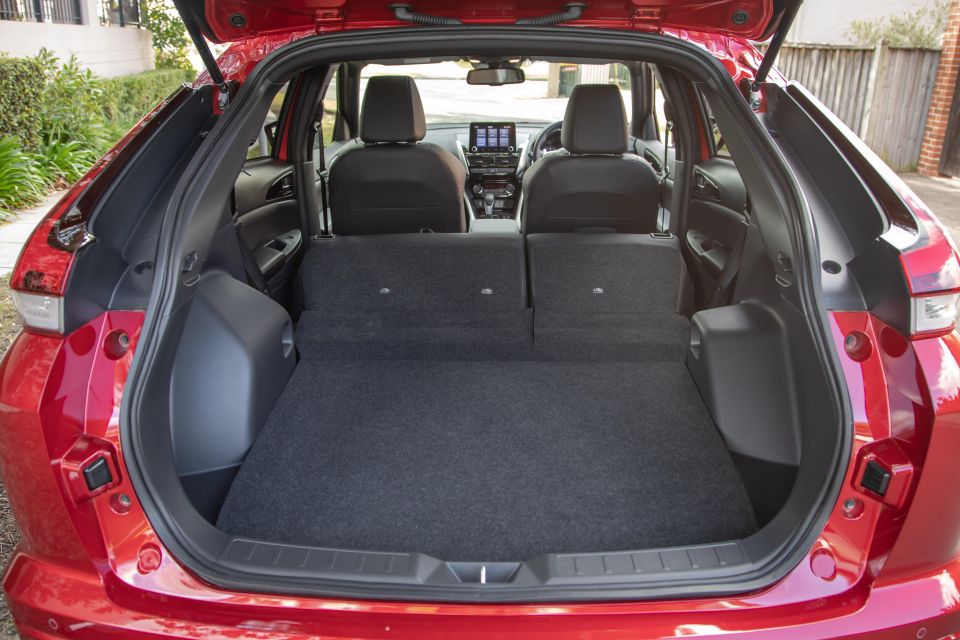
Like up front, the rear seat base is propped up excessively high, which is good for kids but not great for taller adults due to the low-slung ceiling. But legroom is good, toe room exceptional, and it’s roomy enough for long-haul comfort.
Not nearly as commendable is that, despite the fitment of rear seat heating, there are no rear air vents, just a sole 12-volt outlet for device power.
Boot space is a usable 405 litres that expands to 1172L with the 60:40 rear split seatbacks stowed. As a five-seater, the boot offers decent length if not a huge amount of height due to the high-set floor. It packs a space-saver spare under the floor.
With six grades in its range, the tree-topper ought to feel more upmarket and unique than the Exceed. Instead, you be forgiven for guessing it’s decent mid-ranger at best.
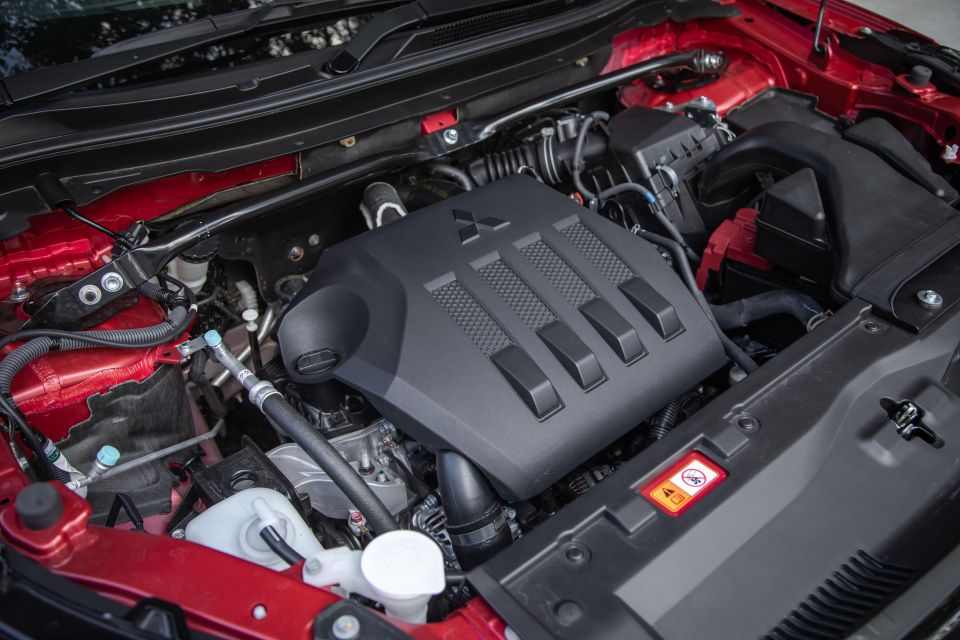
Unlike some rivals, the Eclipse Cross is one-size fits all for motivation. All versions feature a turbocharged 1.5-litre four-cylinder petrol engine producing 110kW at 5500rpm and 250Nm from 2000rpm.
It’s backed by a continuously-variable transmission (CVT) though the Exceed gets paddle shifters in service of the eight ‘steps’ for what’s intended to be a more gearbox-type effect.
The all-wheel drive system is an on-demand type paired with Mitsubishi’s Super All-Wheel Control smarts offering Normal, Snow and Gravel selectable calibrations, while dynamics are claimed to be augmented by a particular take on the company’s Active Yaw Control system.
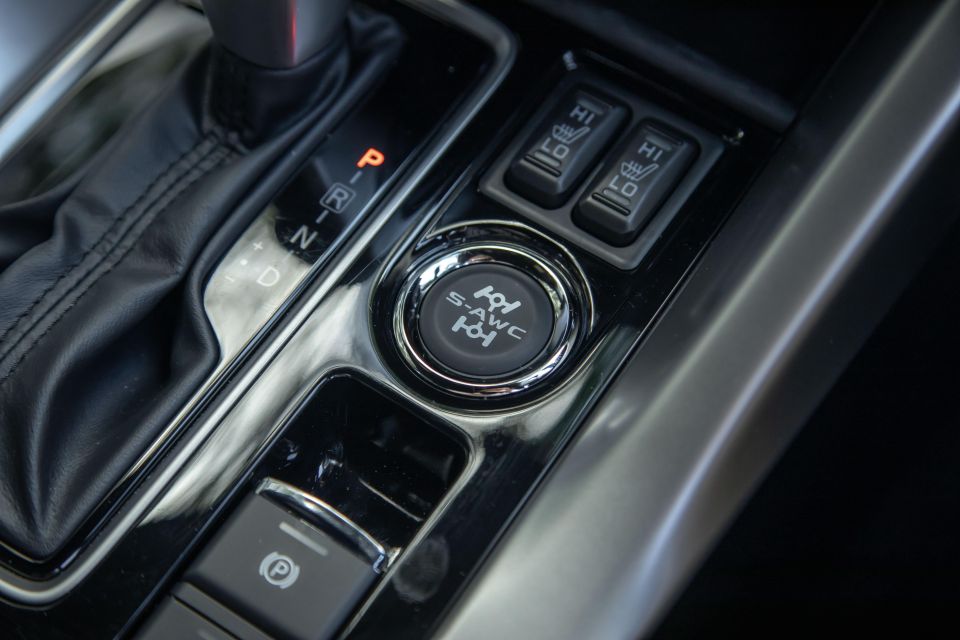
The turbo engine runs on a minimum of 91 RON with a combined consumption claim of 7.7L/100kms, or 0.4L thirstier than front-driven variants by its maker’s reckoning.
Our test machine returned low eights during mixed driving assessment. The AWDs also fit a slightly smaller 60L tank compared with the 63L unit in the FWDs.
Sat on fully independent suspension and with disc brakes at all corners, the Exceed clocks in at around 1545 kilograms. Braked towing is rated at 1600kg.
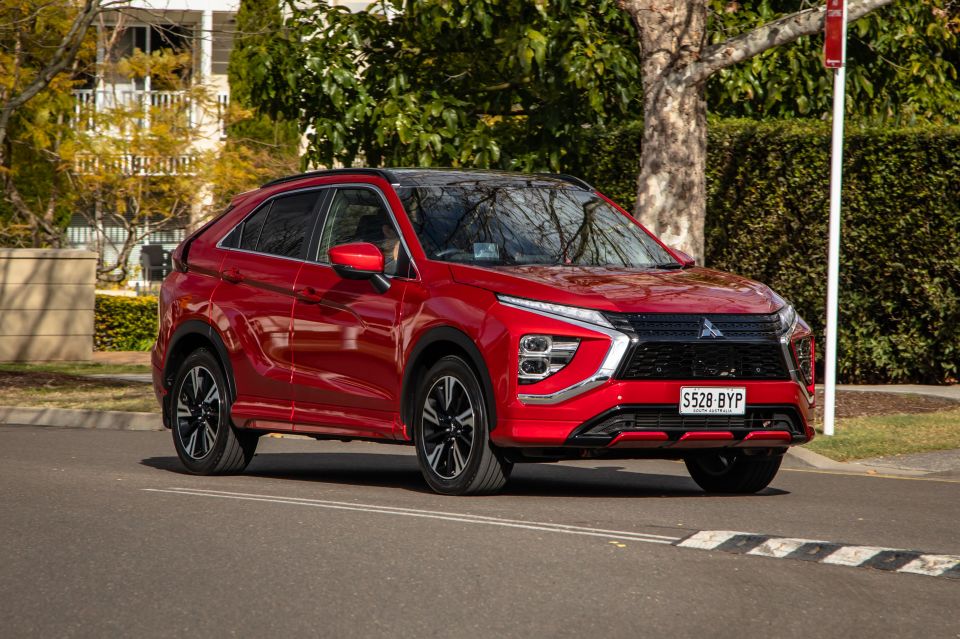
There’s little, technical or otherwise, to suggest that the Exceed’s core driving experience is any different to the significantly more affordable LS AWD version we reviewed recently.
Same running gear, little disparity in kerb weight, all of the oily and electronic bits underneath the skin essentially identical. You don’t get a superior (comfier or sportier) drive at Eclipse Cross’s top end.
I’m not quite as enthusiastic about this powertrain as some of my colleagues, an engine and transmission marriage that’s more than fine as a $30,000 ES prospect if less so as a $40,000 flagship.

Where expert car reviews meet expert car buying – CarExpert gives you trusted advice, personalised service and real savings on your next new car.
The little turbo 1.5 certainly drums up some muscle without venturing too high into its rev range. Its 250Nm is ample. It’s just the engine’s response is a touch tardy to throttle input. It’s a gruff sounding engine when you lean into it and tends to idle high (around 1700-1800rpm) when cold.
Mate it to a CVT transmission that’s less than immediate in response and far from linear in behaviour, and the amalgamation has an unpleasant elasticity. Under constant-throttle acceleration, it transitions from slightly too lazy to too assertive, be it at a cruise or getting a move on. With this much torque on tap, delivery ought to be more consistent.
Its faux gear change ‘steps’ arrive almost randomly and are mostly absent under hard acceleration when they’d at their most welcome, as they’d go some way to hiding those unpleasant rev-pinning CVT traits.
Despite the sporty crossover façade, it’s wholly a soft-edged character. The body control is wooly though not to the point of being too unsettled, the damping pliant though lacking enough discipline to iron out small road imperfections that arrive through the cabin as quite sharp hits.

If there’s talent in the S-AWC all-wheel drive smarts, there’s little in the ride and handling package that encourages you to explore it.
It is, though, a pleasant enough thing to commute in. It’s acceptably quiet, easy to see out of, and unflustered on the highway, where its torque surfeit makes for quite effortless overtaking.
The steering is inert if lightly-weighted and reasonably direct, and it’s friendly enough to serve well as a long-haul proposition if, again, with not much added luxury or added premium-ness over lower-grade variants.
What the Exceed does bring to the road-going experience are superior headlights and, functionally, the LEDs are decent. Ditto the adaptive cruise control that, apart from a bit of fluctuation are the designated speed, works a treat.

The front parking sensors are handy, given it’s tough to judge the leading edge of the pronounced snout from behind the wheel, and the 360-degree camera is quite good – better than the fisheye-perspective reversing camera display, in fact.
At least the head-up display brings a digital speedo to the experience, which is remarkably absent further down the Eclipse Cross line-up.
The modified rear hatch glass is an improvement though there remains a fairly hefty blind spot at the C pillars not helped much by the blind-spot monitoring system when parallel parking as it picks up all kerb-side movement, including pedestrians walking along the footpath.
All in all, the Exceed AWD is a decent enough if unremarkable drive.
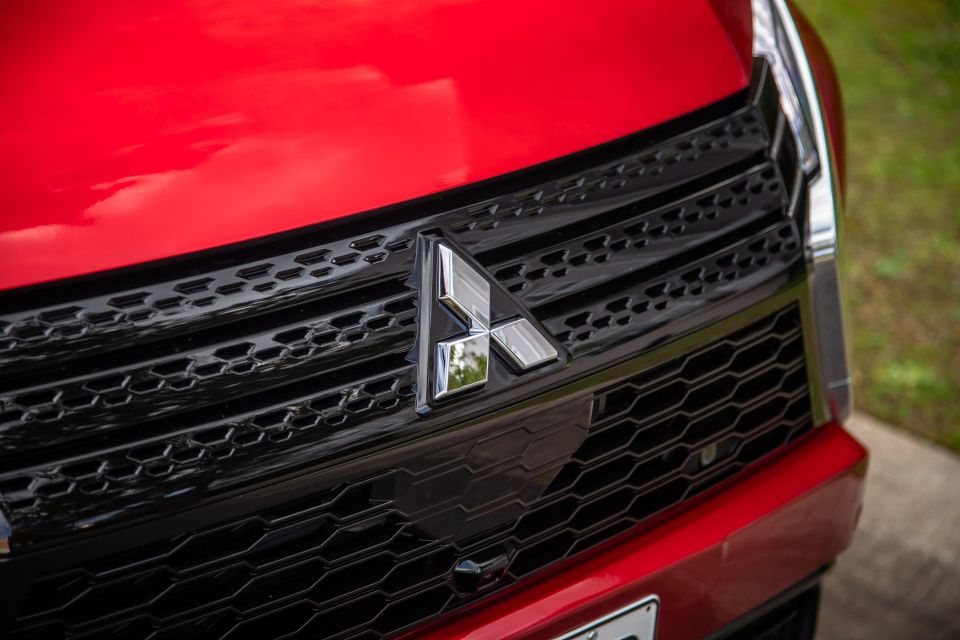
Mitsubishi makes an understandable song and dance about its 10-year warranty. Bravo.
It is, though, conditional in that it requires commitment to Mitsubishi’s dealership network and it’s capped at 200,000 kilometres – not unlimited, though still a lot of ownership mileage.
Other servicing circumstances return five years and just 100,000km of surety, which doesn’t appear quite as enticing.
Servicing is a typical 12 months or 15,000 kilometres, whichever comes first, with interval outlays between $299 and $599 across ten long years of capped-price servicing, which averages out to $359 per year.
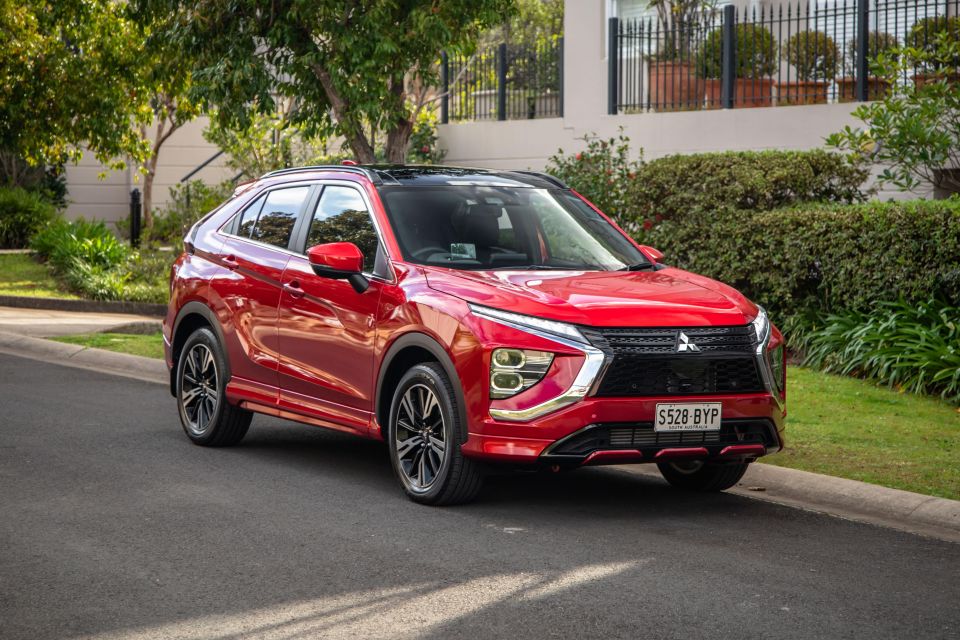
Buy your new car without the stress. It's fast, simple and completely free.

Great service from Travis and team, second time I have used this business would not hesitate to recommend them to anyone
Craig C.
Purchased a Ford Ranger in Sunshine Coast, QLD
CarExpert helped Craig save $7,224 on his Ford Ranger, now let us save you on your next new car.
Get your BEST priceThe Eclipse Cross’s mid-life growth spurt, nudging it more comfortably into medium-sized SUV consideration, was a wise move.
At the sort of money the top-dog Exceed asks for it actually appears pretty decent value if sheer features count is the primary metric – and that is perhaps where the Exceed convinces the least.
If a variant-to-variant walk-up strategy appears solely hinged on adding kit, the Exceed feels a little too much like a basic version with a lot of tart ups. There’s no digital instrumentation, no unique wheel style, and not nearly enough lifts in material choice and execution in the cabin to convince that you stepped six rungs up the range ladder to the pinnacle of the breed.
Thing is, you start searching further down the range for a sweeter spot and suddenly fairly key equipment is absent.
That said, it does seem, viewed from the top of the range down, that the front-driven Aspire is probably Eclipse Cross at its most convincing.
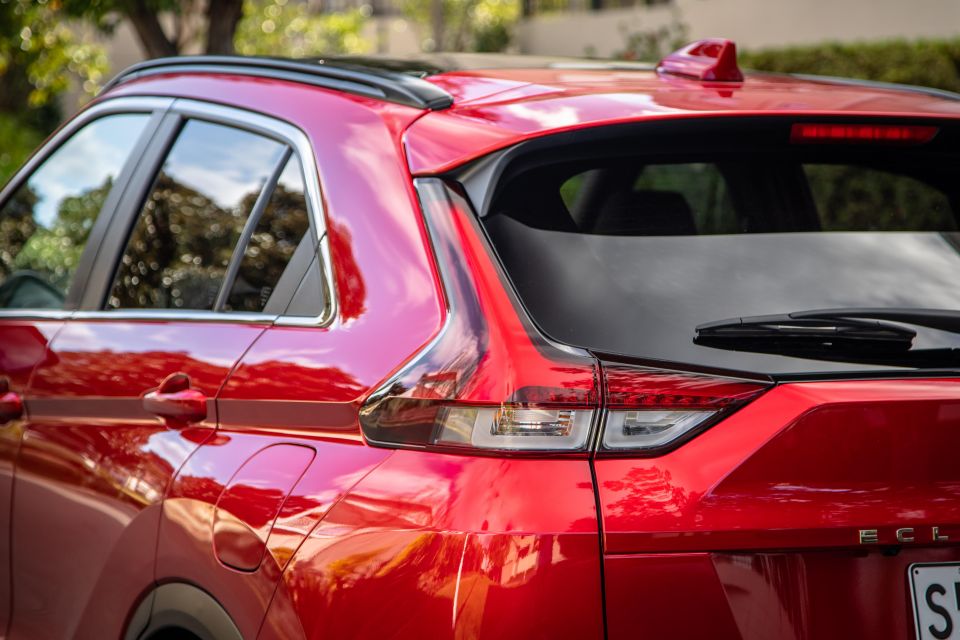
Click on the images for the full gallery
Where expert car reviews meet expert car buying – CarExpert gives you trusted advice, personalised service and real savings on your next new car.


Max Davies
6 Days Ago


James Wong
5 Days Ago


James Wong
4 Days Ago


Max Davies
3 Days Ago


Josh Nevett
1 Day Ago


Max Davies
1 Day Ago